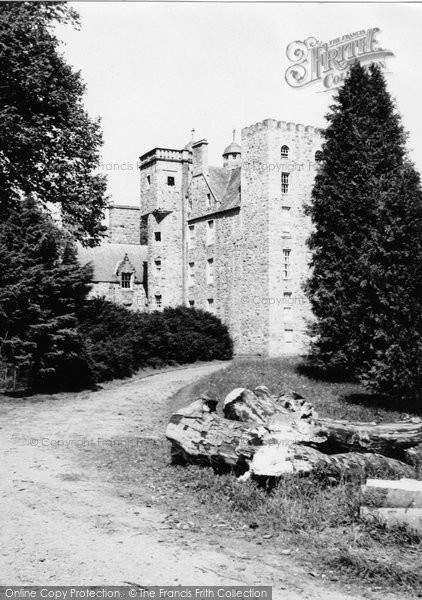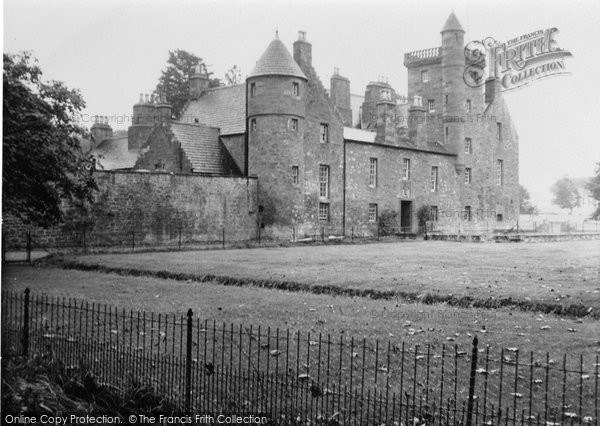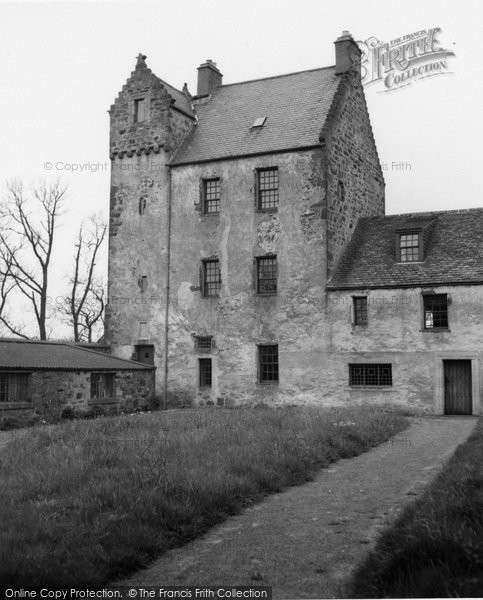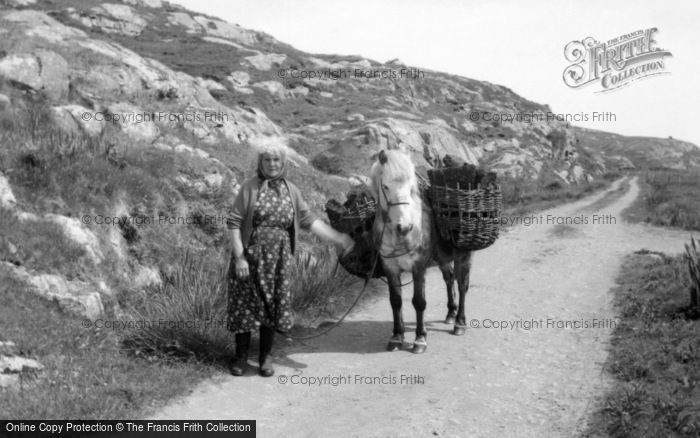
Old photograph of Ackergill Tower,
Caithness,
Scotland. Built in the 1400s by Clan Keith, Ackergill Tower is a five storey oblong tower house. The Keith clan, under John Keith, took the lands at Ackergill in 1354, and Ackergill Tower was probably built by his son. This tower has several historically famous things, but one which is often forgotten is the fate of a young woman by the name of Helen Gunn. In her story, the young woman is abducted by John Keith because he wanted her for her amazing beauty. She flung herself, or fell, from the highest tower to escape her abductors advances. Supposedly her ghost is still seen, wearing a long red rustling ball gown and a tall head of black hair. This was in the late 14th or early 15th century and is said to have been the true beginning for all Feuding between the Gunns and Keiths. It led to the Battle of Champions in either 1478 or 1464, a massacre of the Gunns by the Keiths at the chapel of St Tear (Tayre) just east of the village. In 1547, the Sinclairs of Sinclair and Girnigoe Castle attacked and seized the castle. Mary the Regent granted the Sinclairs remission for this, and returned Ackergill Tower to the Keiths, and later installed Lord Oliphant as keeper of Ackergill in 1549. The Sinclairs again captured the castle in 1556, for which they were again granted remission. In 1593, Robert Keith, brother to the William Keith, 6th Earl Marischal, who rightfully owned the tower, seized Ackergill by force, for which he was declared a rebel, and the castle returned to the Earl. In 1598, another Keith, one John Keith of Subster, attacked the tower in the dead of night, taking its occupants by surprise and capturing the place. In 1612, the Sinclairs acquired Ackergill Tower once again, but through legal means, when it was sold to the Earl of Caithness by the Earl Marischal. However, by 1623 it was under assault once more, when it was besieged by Sir Robert Gordon during his feud with George Sinclair, 5th Earl of Caithness, but the Sinclairs surrendered the castle before any assault took place. In 1651, Oliver Cromwell may have used Ackergill Castle to garrison his troops during his siege of the Keith's Dunnottar Castle, as he was hunting for the Honours of Scotland. In 1676, John Campbell, 2nd Earl of Breadalbane and Holland took possession of Ackergill Tower in repayment of debts owed by the Sinclairs.
All photographs are copyright of Sandy Stevenson, Tour Scotland, and may not be used without permission.
View the most recent
Tour Scotland photographs.














































